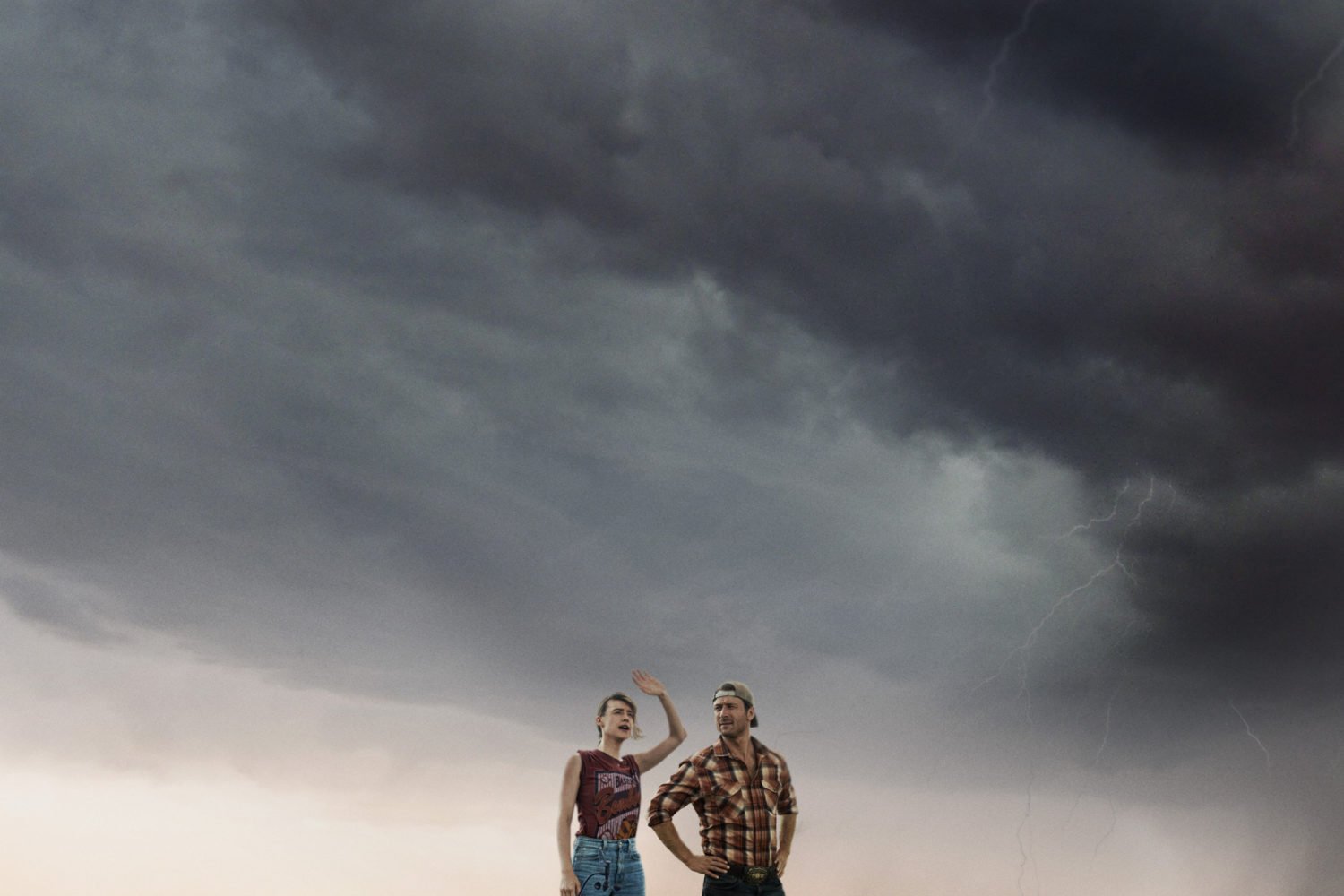Chris Wilson (cwilson@cq.com) is a reporter at Congressional Quarterly. Paleontology was the most popular career path of his kindergarten class.
It was the Frankenstein’s monster of dinosaurs.
The triceratops that stood for nearly a century in the Smithsonian Museum of Natural History had a head too small for its body, a right arm bone larger than its left, and feet that had never belonged to a triceratops.
This wasn’t sloppy paleontology. When the skeleton went on exhibit in 1905, far fewer fossils had been discovered, so scientists had to assemble the three-horned dinosaur from the remains of a dozen specimens. Because no triceratops feet had yet been unearthed, they tacked on feet from a duck-billed dinosaur.
Dinosaurs have gone largely neglected at the Smithsonian for the past 50 years in spite of the dinosaur exhibit’s popularity: It attracts about 5 million visitors a year, many of them children. Finally, the curators decided it was time for a makeover.
Three years ago the museum hired Matthew Carrano, the first curator of dinosaurs since the last man to hold the post, Charles Gilmore, died in 1945.
The “renovation” of the triceratops was the beginning of an overhaul of the dinosaur hall that will take nearly a decade and more than $100 million to complete. The scientists at the natural-history museum are already getting excited.
After all, in the span of geological time, ten years is nothing.
Fixing DC’s Frankenstein
When it came time to bring the 100-million-year-old triceratops into the 21st century, the biggest hurdle was finding new bones.
Although triceratops bones are relatively common in the fossil world, no complete skeleton has ever been uncovered, so bones in models are often mismatched.
“Any triceratops you see anywhere is a composite of at least two animals,” says Hans Sues, the museum’s associate director for research and collections and a dinosaur expert.
Thanks to new technology, Sues and his colleagues—Carrano had not yet come to the museum—had another option. They would make the bones themselves.
The first step was to create computer models of the bones they would need. To replace the undersized left arm bone, they took a CT scan of the corresponding bone on the right side using the same technology as in hospitals for internal imaging. This gave them a digital model of the bone that could then be “flipped” in the computer to provide a model of a good bone for the left side.
Then came the process of transforming that digital file back into bone. In the same way that a CT scan is the three-dimensional equivalent of a regular scanner, there is a “3-D printer,” as Carrano describes it, that can carve models from a block of wax or heavy cardboard, one thin layer at a time.
This process is too expensive for the museum to do in-house, so the staff outsourced the job to a company in California.
The model that came back is detailed and accurate, though like in a digital photograph, you can see traces of pixelation on the surface. Because the material used in the “printout” was too brittle to go directly onto the dinosaur, paleontologists then made a cast from it and created an artificial bone from fiberglass with a plaster finish.
The end product is remarkably like a fossil—an untrained eye wouldn’t know the difference.
Next the museum team scanned the skull, which was too small for the body, and enlarged the digital model to make one the right size. Because the digital file was so large, much of the detail was lost when the file was reduced to a manageable size.
“The surface texture had to really be sacrificed,” says museum specialist Pete Kroehler, who helped reconstruct the dinosaur. For parts of the new skull, the team made silicone molds of the surface texture of the real skull and replicated the texture on the synthetic skull.
The new triceratops, which has returned to its old haunt in the dinosaur hall, is the first model of what a complete triceratops skeleton would look like.
With the triceratops under its belt, the team tackled the stegosaurus and is currently fixing up a pair of camptosaurs, human-size herbivores from the Jurassic Period. At the moment, those creatures are just a pile of bones in the first-floor laboratory at the museum, most of them covered in plaster or silicone. And this is only the beginning of the overdue renovation.
“The majority of our dinosaurs were here in 1910,” Carrano says. “Most of the skeletons you see will be altered in some way.”
Striking a pose
Even when a complete skeleton exists, reconstructing a dinosaur from its bones is far from easy. Paleontologists are continually learning new things about the way the bones fit together and what clues they offer about the dinosaur’s posture and lifestyle. Given what scientists now know, many of the skeletons in the dinosaur hall, unchanged since their original mounting at the beginning of the last century, are out-of-date and sometimes wrong.
“A hundred years ago the display was like a trophy hall,” Carrano says. “They look like they’re posing for a photograph.”
For example, older skeletons often show a tyrannosaurus rex dragging its tail along the ground, which paleontologists now know wasn’t possible because of the shape of the dinosaur’s back.
“The old reconstruction of the T. rex made him look like Godzilla,” Sues says during an interview in the dinosaur hall.
Correcting the dinosaurs’ postures is part of a larger effort to incorporate habitat and lifestyle into the new exhibit. Most of the skeletons now are clustered in the center of the hall, although many never overlapped during the dinosaurs’ 185-million-year rule of the planet.
“You can see why people think all the dinosaurs lived together,” says Sues, gesturing to the ensemble.
The truth is much different. One of Carrano’s favorite ways of impressing on visitors the longevity of the dinosaurs’ reign is to point out that humans are closer in time to the tyrannosaur that stands watch over the entrance to the hall—a difference of 65 million years—than that same T. rex is to the earlier dinosaurs behind him.
To illustrate that vastness of geologic time, the new exhibit will arrange the dinosaurs in different exhibits according to their place in time, surrounded by reconstructions of the flora and fauna from that era.
“What’s often forgotten is that other animals were around at that time,” Sues says. They included, toward the end of the dinosaur era, the earliest mammals.
Organizing the skeletons by era is one way that the paleontologists hope to communicate the diversity of the dinosaurs and open a window into the larger picture of the lifespan of the planet.
“When you think about the immensity of time, it’s something that’s very awesome and very difficult to communicate,” says Sues.
A Prehistoric Cathedral
The clock in Scott Wing’s office, in addition to moving in the wrong direction, in 12 hours ticks through the 12 periods of geological time since the explosion of vertebrates at the beginning of the Cambrian Period, about 542 million years ago.
Following that analogy, the earliest dinosaurs appear just after 7 o’clock. The Jurassic Period—what we think of as the “age of dinosaurs”—begins a half hour later. Dinosaurs flourish for the next three hours or so, with the triceratops arriving at 10:27, in the late Cretaceous. Four minutes later the dinosaurs are extinct.
The earliest bipedal ancestors of humans do not enter the scene until 6½ minutes shy of midnight, and human civilization enters the picture at 11:59 and 59 seconds.
That “immensity of time” is something that Wing, chair of paleobiology at the Smithsonian, hopes to be the central lesson of the new exhibit.
“I want it to be a ‘shock and awe’ experience,” Wing says. “Like walking out of a cathedral.”
Wing’s hopes for the renovation of the dinosaur and other prehistoric exhibits, called Project Deep Time, also have an underlying social context.
“I want people to leave the hall having an emotional appreciation for the intricacy of connections between organisms and their environment and a sense of being a custodian of that knowledge,” he says.
The proposal that Wing has presented to Smithsonian administrators is an ambitious rethinking of the exhibit with an estimated $100-million price tag.
Under Wing’s proposal, part of that money would go toward endowing three postdoctorate and six graduate fellowships, all with an emphasis on research and public education, so visitors could see researchers at work within the exhibit.
Dinosaurs are particularly attractive to curators and museum officials because of their ability to capture the imaginations of the public, particularly children, and they see the exhibit as an entryway to many of the basic tenets of scientific inquiry.
“You can teach almost any science with dinosaurs,” says Sues, leaning over the railing by a fossilized stegosaurus that has been left in the earth, the way a paleontologist might first encounter it. He compares it to a scene from the popular Crime Scene Investigation television series.
“I can come in and tell you all sorts of things that happened here,” he says. “Dinosaurs are the perfect vehicle.”
Focusing on Evolution
Dinosaurs aren’t normally high on the list of topics that the public finds controversial. But recent discussion of “intelligent design,” which suggests that life is far too complex to have arisen without the active hand of a creator, has drawn these denizens of the Mesozoic into the spotlight.
“Dinosaurs are the second focal point of evolution of humans,” says Carrano. “There are a number of writings about how dinosaurs fit into intelligent design or similar frameworks.”
The scientists at the Smithsonian have seen in the halls of the museum some evidence of the growing popularity of intelligent design.
“Suddenly it’s fashionable to be a creationist again,” says Sues. “People come up to me and are very upset that we’re not telling the whole story.” Some school groups, particularly from Christian schools, have their own tour guides who explain the existence of the dinosaurs in theological terms. Sues says others have patiently explained to him that fossils were planted in the earth by Satan as a test of faith in the creator.
Carrano and Sues are unapologetic about not incorporating any discussion of creationism into the exhibit. Instead, they see dinosaurs as a vehicle for teaching larger lessons about the evolution of life on the planet that may be less controversial than one that directly involves humans.
Sues was raised in Germany as a Roman Catholic, but he—like many in the scientific community—does not see a direct conflict between science and religion.
“You have to respect that people have different beliefs, but to me these are non-overlapping spheres.”
A Great New Hall
Several obstacles stand in the way of the new dinosaur hall, the largest being the price tag. The natural-history museum also has other major projects on the docket, including a renovation of the oceanography exhibit already under way and a new exhibit on human evolution in the works.
For those who live and breathe dinosaurs, the new hall cannot come soon enough.
“This is an awful hall, and we’re all itching to change it,” Sues says of the dinosaur hall’s architecture.
While the collection itself is already impressive, Carrano and Sues are hoping to bring new species to the hall.
“We really need to represent more thoroughly the evolution of dinosaurs,” Carrano says. He particularly wants more specimens from the Triassic, when dinosaurs first appeared.
Like any discipline, paleontology has its own politics, and getting a mold of a dinosaur from another museum requires something in exchange. Most often dinosaurs make for their own currency: Museums trade a replica of one for a replica of another of comparable size.
But the Smithsonian Institution prides itself in presenting mostly real fossils in the exhibit, so the curators are less than enthusiastic about adding new skeletons made of fiberglass and plaster. Instead, they go and find the dinosaurs themselves.
Sues goes to Uzbekistan. Carrano spends his summers out West. And they wouldn’t have it any other way.
“Fieldwork is part of the pleasure of paleontology,” Carrano says. “You uncover this thing and you realize you’re the first human being in history to see it. It doesn’t get any better than that.”
When the new exhibit opens, it will be one of the most modern and scientifically accurate dinosaur halls in the world.
“These were life forms that defy all imagination,” Sues says. “We don’t want to teach about dinosaurs as a miserable failure but as part of a beautiful transition from the countless millions that have come before us.”

















